Contents
Description
Avocado is an evergreen tree that grows only in hot climates, with pear-shaped fruits with a large stone inside. The benefits of avocado pulp for men, women and children are due to the high content of nutrients in it.
History and geography of avocado
The homeland of the avocado is considered to be Mexico, although in other parts of the American continent its fruits in wild form were also collected and eaten seven centuries ago. Thanks to the Spanish colonialists, avocado became famous in other countries and got its name “aguacate”, which is close to modern sounding. The term “avocado” stuck to the fruit in the 17th century when English botanists described plants on the island of Jamaica.
The ancient inhabitants of the American continent first collected and consumed the wild fruits of the plant. Then they began to select the best from them and cultivate avocados as an agricultural crop, calling them “forest oil”. Due to its nutritional value, the fruit occupied an important place in their diet. In addition, some tribes valued the plant as an aphrodisiac, presenting it as a symbol of the fertility of the newlyweds.
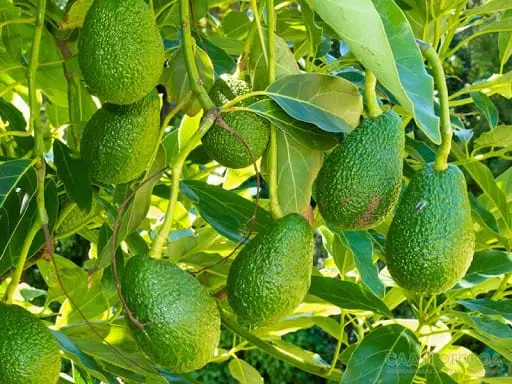
Outside the zone of their historical origin, avocados have become widespread since the 18th century in tropical and subtropical regions of other continents. Since the end of the 19th century, it even appears in Russia. Different peoples called this fruit in their own way: the Incas – “coat”, Indians – “poor cows” because of the specific fat content of the fruit, Europeans – “alligator pear” for a peculiar appearance.
Today, the plant is cultivated on an agricultural scale. The yields and palatability of avocado varieties improved through breeding make it efficient for commercial cultivation. In Israel, the USA, African countries and Australia, farmers receive up to 200 kg of fruits from one tree, which, with proper care, can maintain good productivity for over 50 years.
Composition and calorie content of avocado
Avocado is rich in vitamins and minerals such as: vitamin B5 – 27.8%, vitamin B6 – 12.9%, vitamin B9 – 20.3%, vitamin C – 11.1%, vitamin E – 13.8%, vitamin K – 17.5%, potassium – 19.4%, copper – 19%
- Calories per 100 g 160 kcal
- Proteins 2 g
- Fat 14.7 g
- Carbohydrates 1.8 g
How to choose an avocado
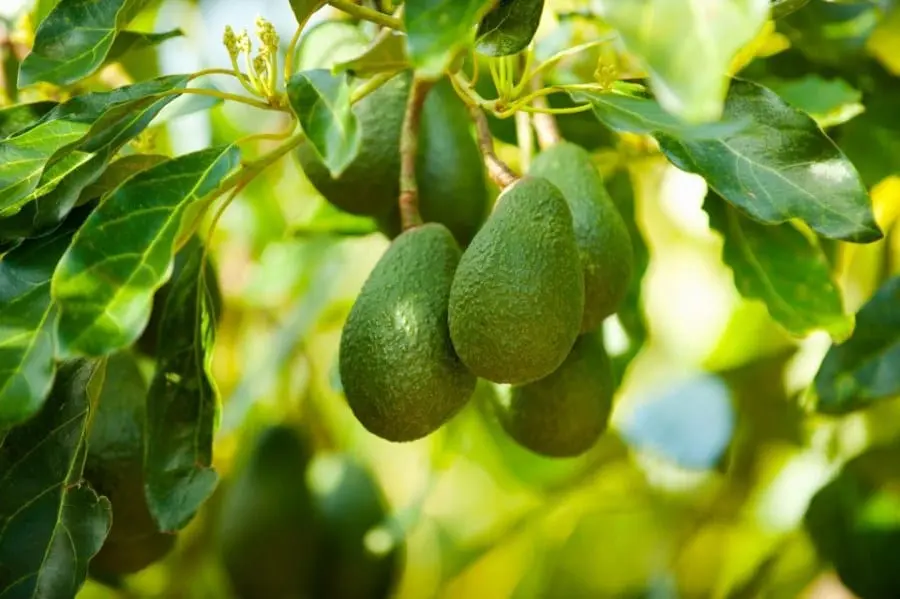
The avocado is spherical or pear-shaped and is 5 to 20 centimeters long. Ripe fruits have a dark green slightly rough skin.
In order to choose the right product, you need to determine the elasticity of the fruit. To do this, hold the avocado in your palm and gently squeeze your fingers.
The fruit is ripe if:
- resistance was palpable;
- the dent quickly leveled out.
If the dent remains, the fruit is frozen and may be rotten.
If the avocado is very hard, it is better not to take it, because then you will not feel any taste.
If there are brown spots or dents on the peel, the fruit is rotten.
The benefits of avocado
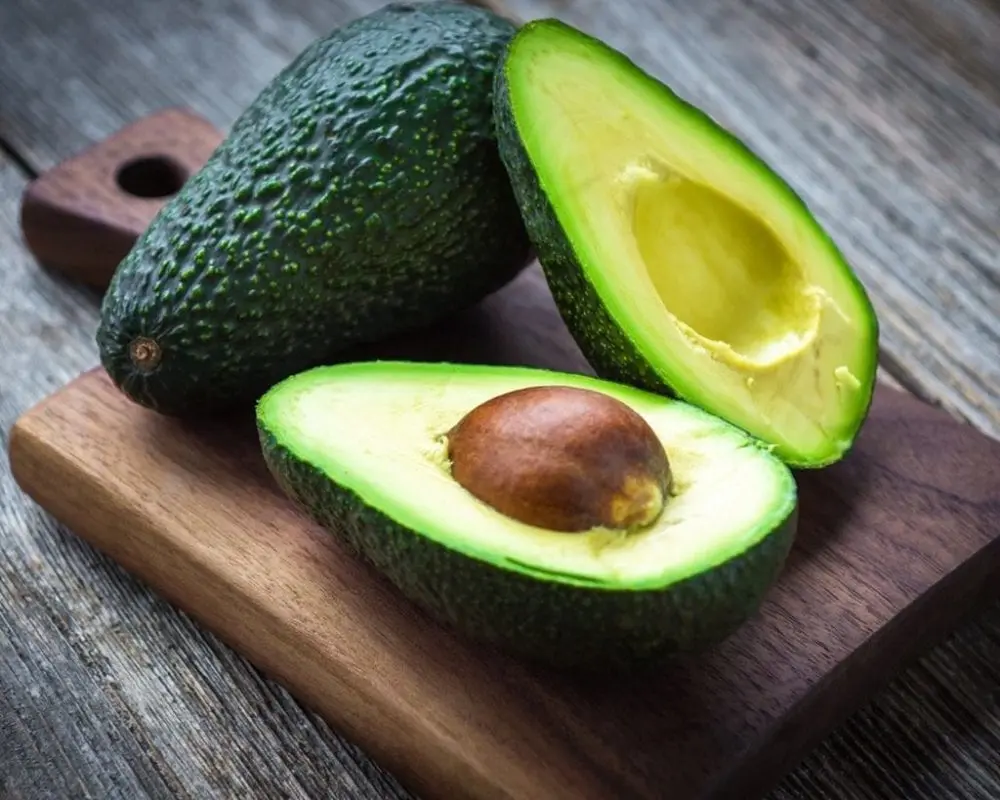
They eat only the pulp of the fruit, which contains a large amount of vitamins (groups B, E, A, C, K, folic acid), minerals (calcium, phosphorus, potassium, iron, sodium, copper, iodine, magnesium and many others). Despite the high calorie content (in 100g 212 kcal), avocado contributes to weight loss due to easily digestible monounsaturated fats. In addition, the fruit does not contain cholesterol.
Nutritionists recommend this product to people with diseases of the cardiovascular system, gastrointestinal tract, as well as for the general improvement of the body’s condition.
Mannoheptulose, which is found most in avocado, has a positive effect on the state of the nervous system, reducing the feeling of fatigue and drowsiness. Scientists are planning to use this substance in the future as a “fasting pill” without reducing the real diet, since mannoheptulose reduces the secretion of enzymes necessary for the absorption of glucose.
Thus, cells receive less energy for the same amount of food. The positive effect of a small starvation of cells was revealed in the process of experiments on mice and monkeys in the thirties of the last century – the experimental lived much longer than their counterparts.
Avocado harm

Do not forget about the toxicity of the peel and bone, and also limit the use of pulp – because it contains a lot of fat. Due to the specific composition of the avocado, it can cause an allergic reaction, so this fruit should be introduced into the diet gradually.
It is worthwhile to use avocados with care for nursing mothers and give mashed potatoes as complementary foods to the baby, as this can provoke diarrhea in the child.
People with acute liver disease should eliminate avocados from their diet, like most fatty foods. Occasionally, there is an individual intolerance to the product and allergies – in this case, it is better not to eat avocados.
The use of avocado in medicine
Avocados are often included in many diets, as it is extremely harmful to completely eliminate fats from food. The fruit contains a lot of fats, as well as L – carnitine, which speeds up metabolism and helps “burn” excess weight.
For people suffering from gastrointestinal diseases and with a tendency to constipation, this fruit is especially useful. Half an avocado contains 7 grams of fiber, which is almost 30% of the daily value. Thanks to dietary fiber, the condition of the intestines improves, because they serve as a breeding ground for beneficial bacteria.
The absence of cholesterol in avocados, as well as the high content of monounsaturated fatty acids, helps to lower total cholesterol levels as well as blood sugar. Periodic consumption of a small amount of avocado is beneficial for people with diseases of the cardiovascular system, as well as diabetes.
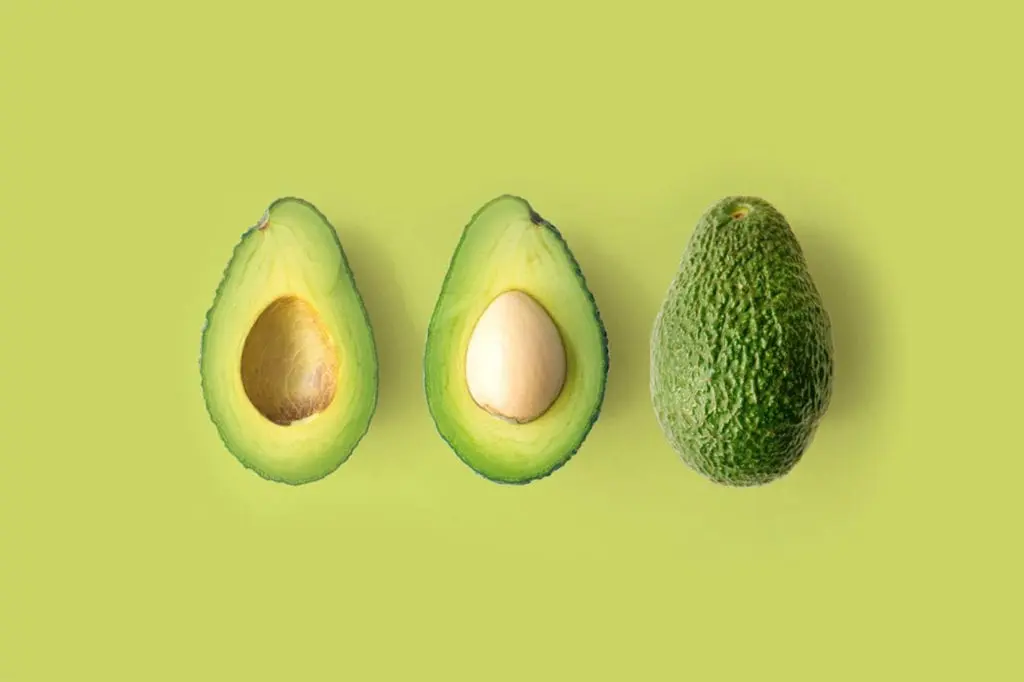
Avocados are also used in cosmetology due to the high concentration of fats and vitamins A and E. Masks for face are prepared from oil or puree from the pulp, which have moisturizing, anti-inflammatory, healing properties and smooth wrinkles. Masks are also applied to the hair to moisturize dry and brittle hair. Often, avocado oil is found in creams and balms.
For people suffering from gastrointestinal diseases and with a tendency to constipation, this fruit is especially useful. Half an avocado contains 7 grams of fiber, which is almost 30% of the daily value. Thanks to dietary fiber, the condition of the intestines improves, because they serve as a breeding ground for beneficial bacteria.
The absence of cholesterol in avocados, as well as the high content of monounsaturated fatty acids, helps to lower total cholesterol levels as well as blood sugar. Periodic consumption of a small amount of avocado is beneficial for people with diseases of the cardiovascular system, as well as diabetes.
Avocados are also used in cosmetology due to the high concentration of fats and vitamins A and E. Masks for face are prepared from oil or puree from the pulp, which have moisturizing, anti-inflammatory, healing properties and smooth wrinkles. Masks are also applied to the hair to moisturize dry and brittle hair. Often, avocado oil is found in creams and balms.
Types and varieties of Avocado

The fruit culture of avocado (American Perseus), based on the geography of its origin, is divided into three types, differing in biological properties and growing conditions:
1) Mexican, with a thin skin of the fruit and the smell of anise in the leaves;
2) Guatemalan, more thermophilic and large-fruited;
3) Antillean (West Indian), the most demanding in terms of heat, but characterized by rapid ripening of fruits.
Each variety has many varieties, the number of which reaches several hundred. Also, several hybrids have been bred by crossing between species. Avocado fruits, depending on the variety, can be distinguished by their shape (round, oblong or pear-shaped), taste and size of the fruit. The fruits differ in the color of the peel (from light green tones to almost black). Moreover, in some varieties it is constant, while in others it can change during the ripening process.
The most popular avocado varieties in the world are:
- “Gwen”, endowed with an egg flavor;
- “Zutano”, which tastes like an apple;
- Pinkerton, which has a very subtle sweetness;
- “Fuerte” with notes of milk or cream on the palate;
- “Reed” resembling a pear and nut;
- “Bacon”, very juicy, but with a weak taste;
- “Hass”, the pulp of which is particularly oily.
Taste qualities
The avocado tastes like a sweet mixture of butter and herbs. Depending on the variety, it can have a special flavor of nuts, apples, mushrooms and even pine needles. Moreover, its intensity will depend on the degree of proximity of the pulp to the bone or skin.
All this applies to a full-fledged ripe avocado. Its pulp should be closer to a creamy consistency, aromatic and buttery. In unripe fruit, it is harder and more bitter in taste.
The taste of avocados can also deteriorate during cooking. It is advisable to use it fresh, not allowing it to oxidize in the air or soak up other odors, of which it is very capable. It is also not recommended to subject the fruit to heat treatment, as some varieties of avocado may acquire a bitter taste from this.
Cooking applications
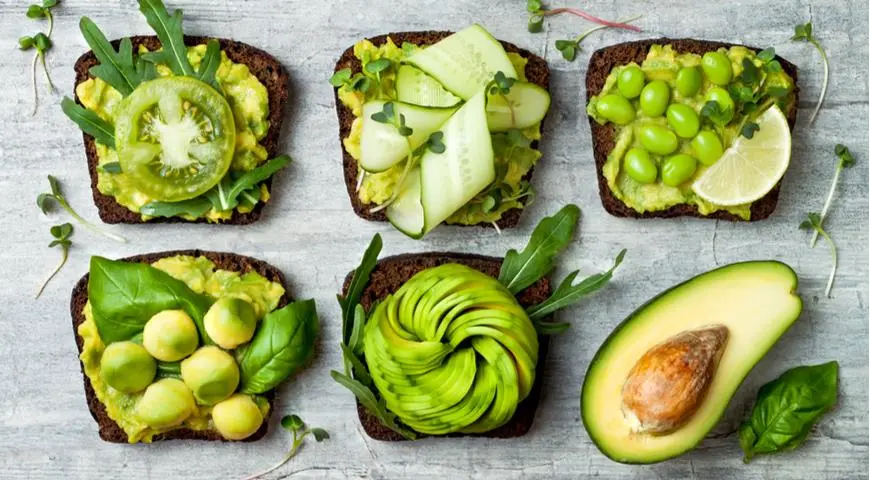
For culinary purposes, the pulp of a ripe avocado is used, extracted with a spoon from a half of an unpeeled fruit after removing the stone. Due to the undesirability of heat treatment, most often the fruit is added to cold dishes (salads, snacks and sandwiches). But this does not limit its scope.
Also, avocado cooks prepare:
- sauces, creams, pastes, mousses;
- side dishes;
- cream soups, cold first courses, mashed soups;
- dishes made from eggs, cereals and pasta, as well as with legumes or mushrooms;
- various salads from vegetables and fruits, meat, fish and seafood;
- stuffed vegetables;
- meat, fish dishes, as well as poultry and seafood;
- sushi;
- juices, cocktails and other cold drinks;
- desserts (ice cream, cakes, pancakes, pastries).
The neutral taste of avocado makes it easy to combine with a wide variety of foods. In salads, its pulp is able to successfully set off such expressive components as herring, ham, crab sticks, shrimp, chicken, boiled eggs. In the preparation of desserts and drinks, avocado goes well with dairy products and fresh raspberries, lemon, lime.
The most popular are salads prepared with this fruit (with shrimps, meat and mushrooms, cheese and fruits), pancakes with caviar and avocado, milkshakes, and many people like its salted pulp just spread on bread.









